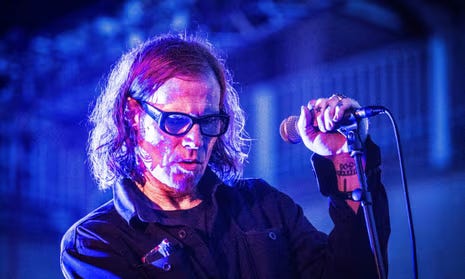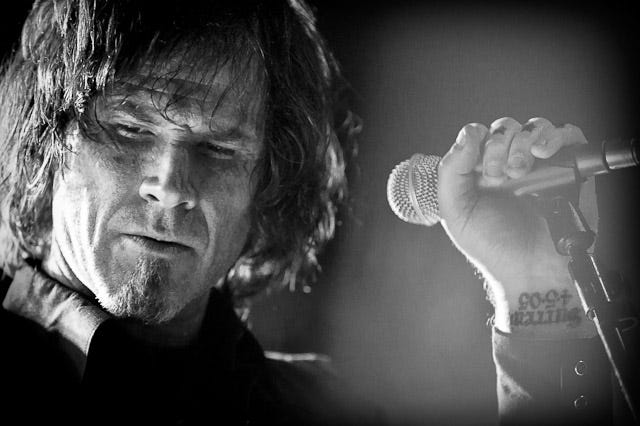When I first heard Mark Lanegan's One Way Street, it felt like the song had been written just for me. Not in some abstract sense, but in a way that struck a chord with my own creative journey, my own sense of struggle and reflection. Lanegan’s voice, raw and weathered, echoed through me like a conversation with an old friend—or an old ghost, maybe—and I couldn’t help but be captivated by how timeless the song felt. The more I listened, the more I understood that it wasn’t just a song about personal loss, it was a universal reflection on the human condition.
At its core, One Way Street feels like a meditation on inevitability and surrender. The lyrics have this profound simplicity to them, but the more you unpack them, the more layers you find. “One way, one way,” he repeats—it's almost a mantra, a call to confront the paths we take in life, no matter how narrow they may feel. It's an acknowledgment of those inevitable moments where you find yourself boxed in, trapped in your own decisions, yet still, there's something deeply freeing about the realization. There's nowhere to go but forward.
The lyrics paint such a vivid picture of this struggle, the juxtaposition between love, chaos, and self-destruction:
"The stars and a moon
Aren't where they're supposed to be
For the strange electric light
It falls so close to me"
Lanegan’s words capture a sense of disorientation—this feeling of things being out of place, as if the world around you isn’t aligning the way you thought it would. He’s caught in this “strange electric light,” something that’s both alluring and dangerous.
"Love, I come to ride
High on that seasick rolling wave
And you know that I am
Just trying to get out”
This line evokes the push and pull of desire and escape. The seasick rolling wave feels both thrilling and suffocating, and in his search for freedom, Lanegan seems to be at odds with himself, trying to break free but finding himself tethered to something that keeps him in that loop.
The song’s minimalist soundscape reflects this tension, giving space for Lanegan's voice to carry the weight of the words. His delivery feels like a raw confession, drawing out the inner turmoil and melancholy that runs throughout the lyrics. The repetition of "one way street" isn’t just a phrase—it’s a reminder that no matter how many times we try to turn back, we're always moving forward, for better or for worse.
"Oh the glorious sound
Of the one way street
But you can't get
Can't get it down without crying"
The idea of the “one way street” is a constant in the song, representing a path that’s both inevitable and inescapable. It’s not a straight road but one lined with pain, with the deep, overwhelming realization that you can’t escape your past or your decisions without feeling something—a cry that signifies both release and despair.
In his 2012 interview with Performer Magazine, Lanegan reflected on his songwriting process:
“I just let it go where it’s going and don’t really question it too much.”
This quote speaks directly to the way One Way Street feels. There’s an organic, natural flow to it. It’s not about forcing meaning or emotion—it’s about letting it emerge and taking the listener along for the ride. That’s why the song doesn’t overwhelm you with excess, but instead, leaves space for you to sit in its melancholy and find your own meaning.
"And everywhere I've been
There's a well that howls my name
From the one tiny sting
To that vacant fame"
These lines capture the echo of regret and the hollowness of chasing something fleeting. The "well that howls my name" calls back to the persistent nature of our past, always following us, and no matter how far we try to go, it remains present.
For Lanegan, there’s an acknowledgment of this cycle—a "deafening roar" that never lets up, which he poetically calls the "one way street":
"Oh the deafening roar
Remember that's called a one way street
And you can't get
Can't get it down without crying"
Here, the roar isn’t just the noise of the world—it’s the noise inside, the internal conflict that refuses to be ignored. The road, the one way street, represents a reality that we cannot change, no matter how much we try.
Musically, One Way Street is a masterclass in understatement. The track is stripped down, leaving room for Lanegan’s voice to really take center stage. The slow, deliberate pacing of the guitar and bass creates this space where every note feels significant. It’s not flashy, it doesn’t overwhelm you—it just sits there, quietly building a tension that mirrors the thematic content of the song.
In his own words, Lanegan has often explained his need to connect with his listeners:
“I make music because I’m driven to do it, but I also do it because of the idea that somebody’s gonna hear it.”
This approach permeates One Way Street. The simplicity of the song, both in structure and production, creates a space for the listener to find themselves in it. Lanegan’s delivery makes each note feel like a call to a distant memory or a part of yourself you might have forgotten.
This is where the song’s true power lies—its ability to reflect so much with so little. The minimalism in both the lyrics and the music lets the listener fill in the gaps. There's an almost meditative quality to it, but it’s not the calm kind of meditation. It’s the kind of reflection that comes after you've been through something and are looking back, realizing what you've learned, and what you still need to face. It’s a moment of reckoning, of clarity that doesn’t feel neat, but raw and imperfect.
For me, One Way Street captures that quiet resilience—the kind you don’t talk about, the kind you just live. And that’s what makes it so compelling. The way Lanegan’s voice and the music come together to create something that feels both singular and universal. It’s a reminder that sometimes the most powerful songs are the ones that don’t try to be anything other than themselves. And in that simplicity, they become everything.







Thanks for the insight Tony, listening to this track now, great so far...